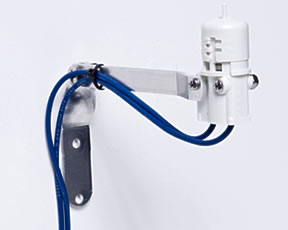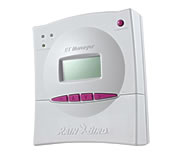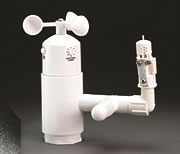Rain shut-off device
- Home
- /
- Operation and scheduling
- /
- Rain shut-off device
Background
Various devices have been developed to automatically bypass an irrigation cycle after a certain amount of rainfall. Rain sensors or rain shut-off switches have been most commonly used in residential and commercial systems. However, soil moisture sensor (SMS) controllers and evapotranspiration (ET) controllers, which are known as Smart Water Application Technology (SWAT) devices, also function as rain shut-off devices and are becoming increasingly useful in residential and commercial settings.
Chapter 373.62, Florida Statutes, states:
Any person who operates an automatic landscape irrigation system shall properly install, maintain, and operate technology that inhibits or interrupts operation of the system during periods of sufficient moisture.
Requirements and certification
A device with rain shut-off capabilities shall be installed in an operable location and is functioning.
| Silver | Gold | Commercial/Institutional |
|---|---|---|
| Required | Required | Required |
All automatic irrigation systems shall be controlled with a smart controller (weather-based or soil-moisture). WaterSense®-labelled controllers comply.
| Silver | Gold | Commercial/Institutional |
|---|---|---|
| N/A | Required | Required |
Florida Water Star Inspectors are responsible for ensuring that the sensor meets the following criteria:
- The sensor is placed in a location representative of the overall landscape conditions. The automatic irrigation override rain sensor shall be located where it can receive rainfall unobstructed and cannot be wetted by irrigation water or roof runoff.
- The sensor is connected to the irrigation controller. The sensor must be wired or set to bypass the irrigation controller when the controller’s rain sensor switch is in the “on” position.
- The sensor is functioning. A rain sensor should be tested by initiating an irrigation cycle and either wetting the rain sensor or activating the rain sensor’s external “switch.” The irrigation cycle should be bypassed.
To function correctly, a rain sensor should never be placed in any of the following locations:
- Underneath existing trees or a tree canopy
- Near plants that will grow in size to obstruct the path of rainfall to the rain sensor
- Under overhangs or eaves
- In high-traffic areas, susceptible to damage
Soil moisture sensor controllers and evapotranspiration controllers that effectively bypass the irrigation schedule following a significant rainfall event comply with this practice.



Program tip
Smart devices are capable of increasing scheduling efficiency, resulting in significant water savings. However, correct installation of these devices requires diligent planning and implementation of a number of best practices. Designers and installers must ensure that any type of Smart device is able to provide the greatest water savings possible.
